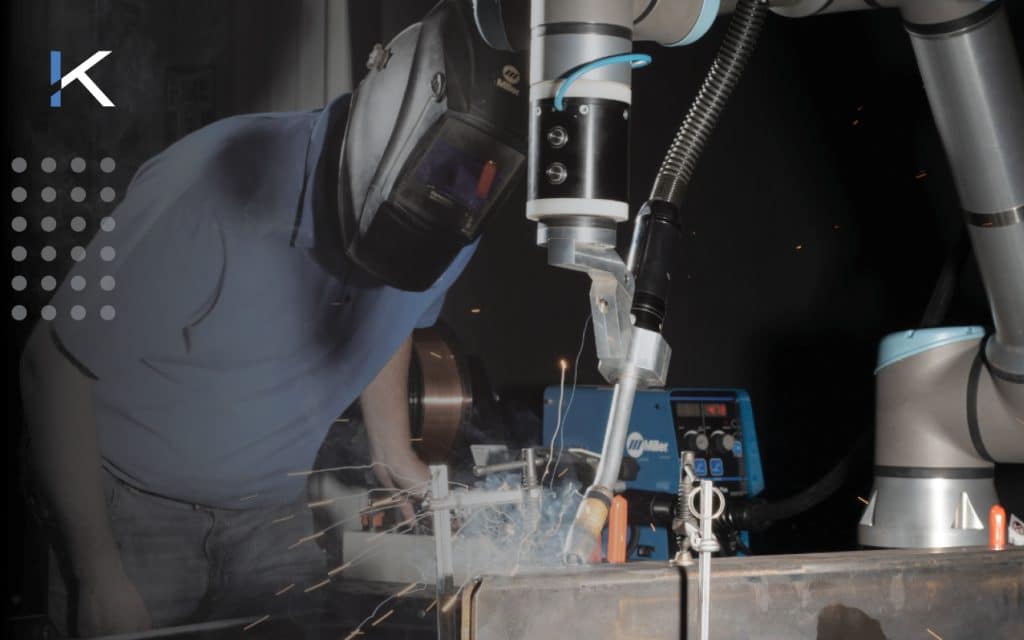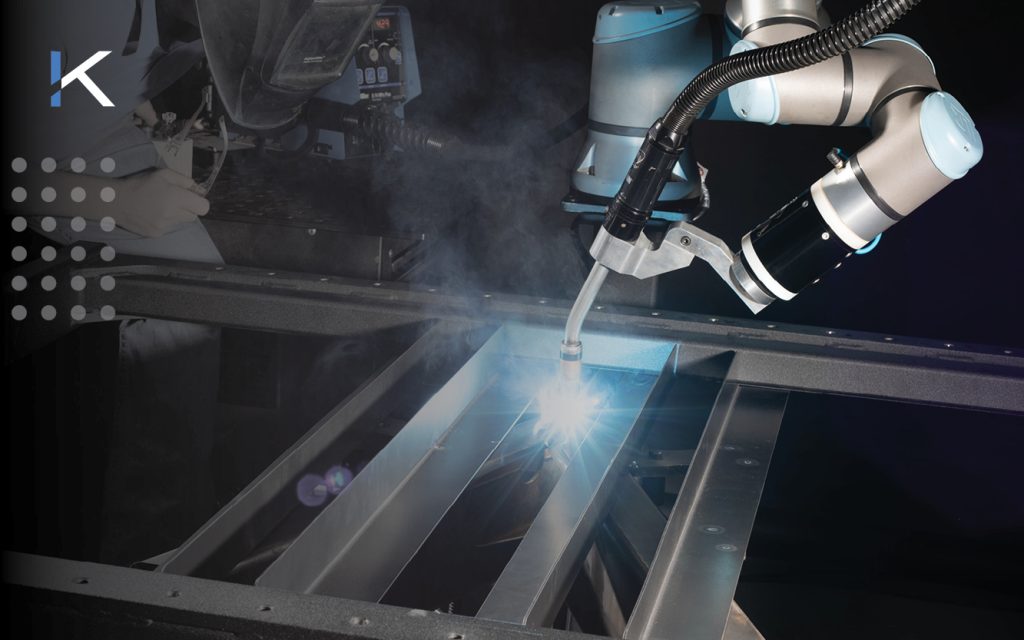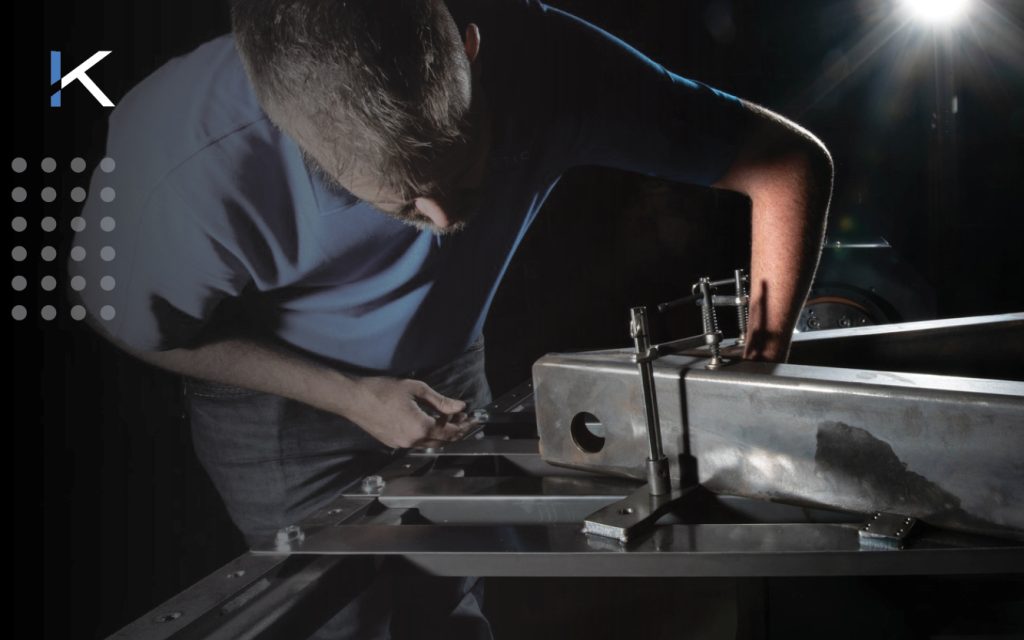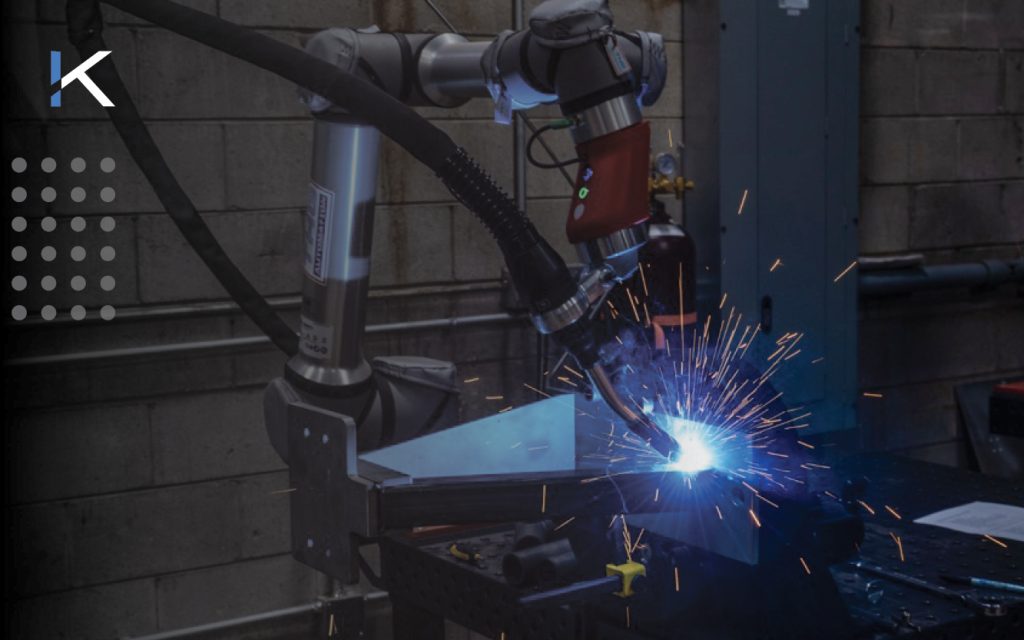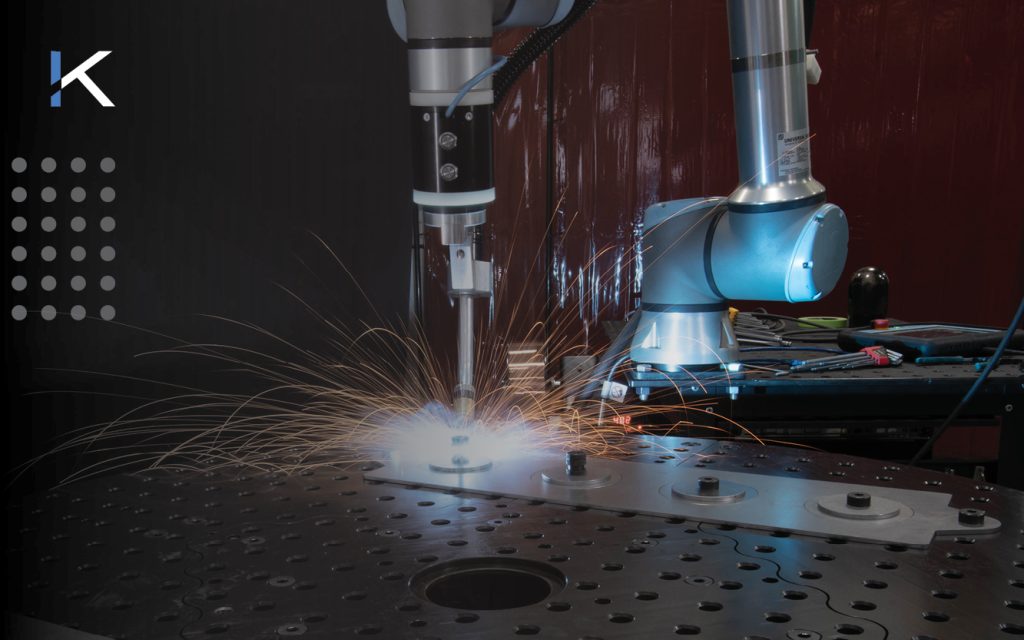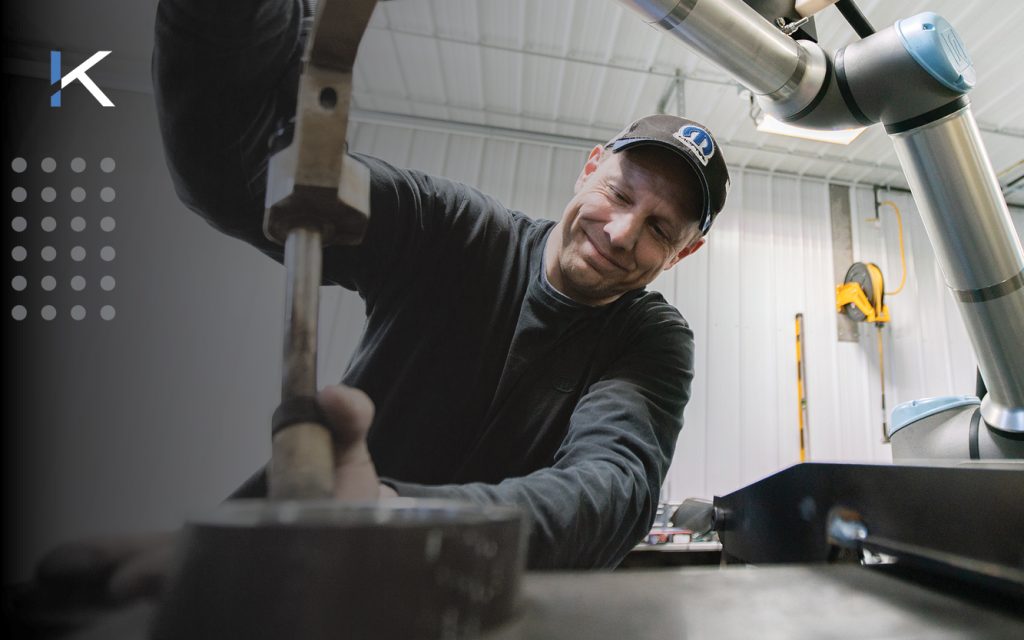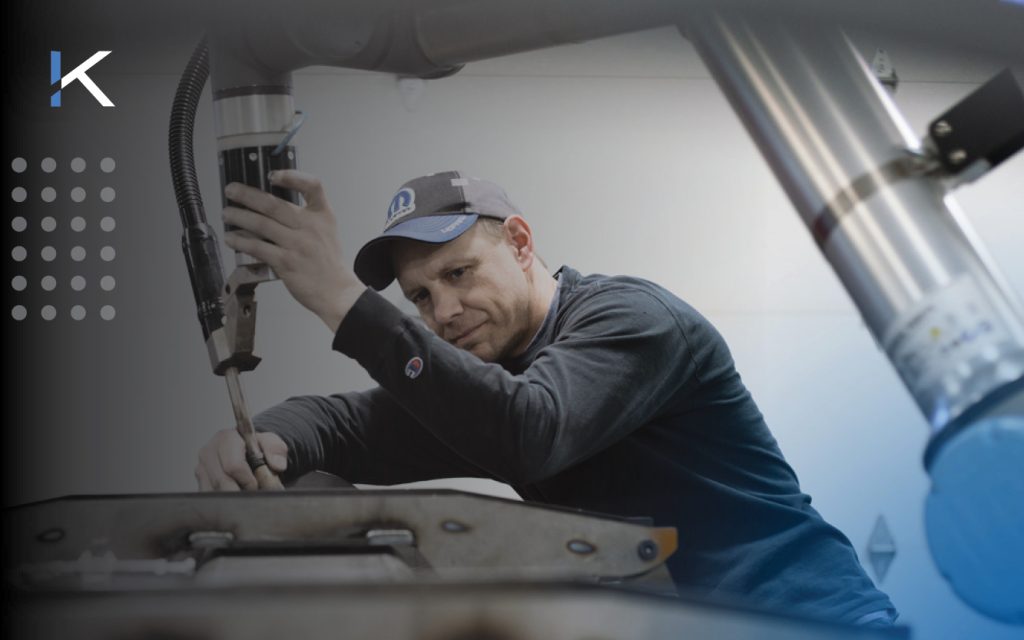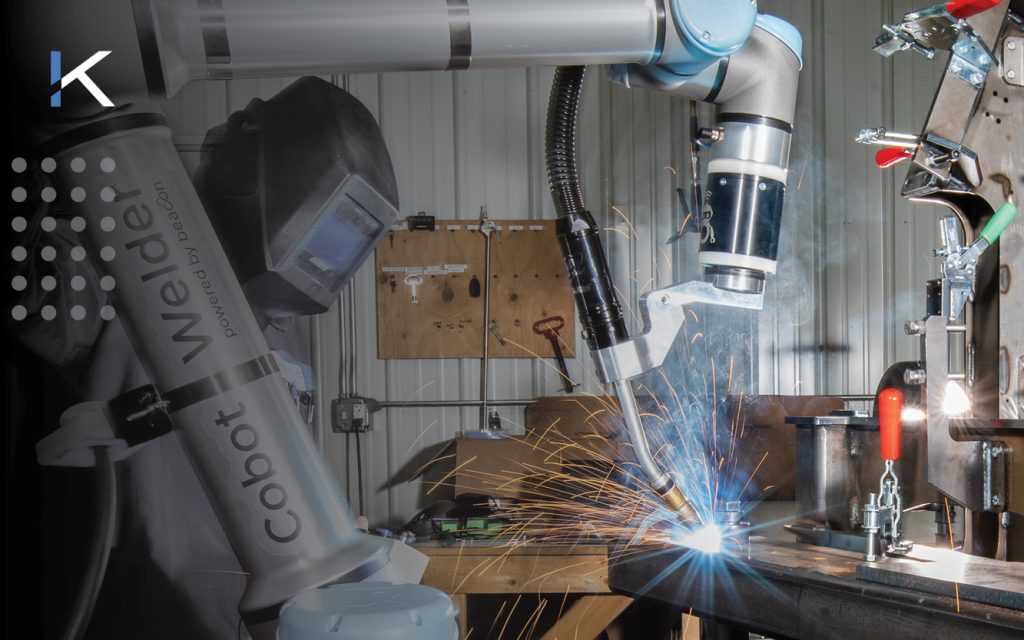With robotics systems integration from Kinetic Technologies, you’ll be equipped to reproduce the best weld your top welder has ever made—all day, every day, on every part. Period.
Robotic welding dramatically improves not only welding productivity but also weld accuracy and repeatability. We’re talking tight tolerances, less rework, and fewer rejected parts.
Here’s where someone (maybe you) usually chimes in with a story about a business (maybe yours) that bought a robotic welder, and it created more problems than it solved.
What’s missing from that story is the why. So we’ll tell you.
If you want optimum results from your welding automation system, you need automation-specific positioners and welding fixtures.
Lucky for you, we’re experts at all of the above.
Robotic Welding Fixtures and Positioners Ensure the Ultimate Precision
In robotic welding, programming is everything. It tells the robot how and where to weld. But even a perfectly programmed robot cannot overcome inaccuracies if the parts aren’t held and positioned correctly.
Precision begins with the positioner
The positioning system’s mounting surface—the welding table—is where you’ll first encounter the potential for error in robotic welding.
Why? In a word:
Runout.
When the table rotates, runout (the deviations between the table’s high and low points) will leave you with no choice but to recreate your programming from scratch to accommodate the table surface’s elevation changes.
Just how severe can runout be?
We found that one Kinetic competitor’s robotic welding table bowed up to 0.1875” over a 36” span.
Kinetic Technologies’ RT1 48” rotary turntable holds +/- 0.0010” runout across the entire surface.
Since welding commonly tolerates runout equal to the diameter of the welding electrode, a +/- 0.0010” runout is practically negligible, measuring at only one-fifth of the width of the typical MIG weld.
With a positioner surface as consistent as the RT1’s, we can address the next concern for robotic welding techs:
Tolerance stackup.
Stacking a fixture and a workpiece on the positioner table leads to tolerance stackup: tiny deviation upon tiny deviation, each moving the weld further and further from accuracy and precision.
Depending on the fixture’s condition and placement, tolerance stackup can worsen to the point of causing part deviations, as well. By the time you begin operational welding, your part could be significantly out of tolerance.
By ensuring that the positioner’s surface is well within the specified tolerance range, you’ll gain increased flexibility at every subsequent step of your robotic welding process.
Custom robotic welding fixtures up the ante on precision welds
As you bring together all the pieces for a weldment, the resulting tolerance stackup can further derail your precision and invalidate your programming. Custom welding fixtures combat the issues caused by tolerance stackup by locating and holding every single piece where it needs to be.
Unfortunately, fixturing is often overlooked—even during robotics systems integrations. If fixturing does come up, most people assume they’ll build their own robotic welding fixtures in-house, just as they’ve always done for their manual welding fixtures.
But in-house fixturing projects rarely proceed as planned.
Companies regularly find their in-house fixturing projects delayed due to their own hefty workloads. They have the ability to do the work, but they don’t have the time. As a result, their fixturing project never progresses, and their new robotic welding equipment is never implemented at its full potential.
True story:
We recently created a custom welding fixture for a company that had already spent a full year working on a fixture for their new welding automation system. After hitting a snag, they could no longer justify the time investment, and they abandoned the project.
Then they called Kinetic.
We visited their facility, met with their team, and reviewed their parts and objectives. Within a few weeks, we had developed and delivered their custom welding fixture—and they started using it the very next day.
We’re not saying you can’t build your own robotic welding fixtures, but there’s serious value in getting help from a team that does this work every day.
Why Precision Matters More in Robotic Welding
Welders know what most people don’t: that welds hold together bridges and beams; they support critical components in cars and trucks and trains and airplanes. Welding is used in countless heavy-duty, high-performance applications, so weld specifications are very, very important.
In traditional welding, expert welders can manually mitigate minor deviations between workpieces. A manual welder can look at a joint and put the weld where it needs to be, making minuscule, almost subconscious adjustments with each weld.
Robotic welding works differently. Where you start determines where you’ll end up.
A robotic welder can’t “feel” its way around these invisible deviations. It will follow its programming to the nth degree. In this regard, robotic welding has more in common with CNC machining than traditional welding. Successful robotic welding technicians use state-of-the-art positioners, custom welding fixtures, and accurate programming, and then they let the machine do its job.
In the great zoo of manufacturing, welding and robotic welding are two completely different species. Feed your robot the wrong food, and it will fail to function properly.
Kinetic Knows Robotic Welding
To achieve optimum results, every robotics systems integration must include positioning and fixturing solutions.
When you invest in the right positioner and fixture, robotic welding is capable of true precision, with a perfect bead every time. And you can reproduce that exceptional weld ad infinitum.
Let us show you how. Get the e-book!





